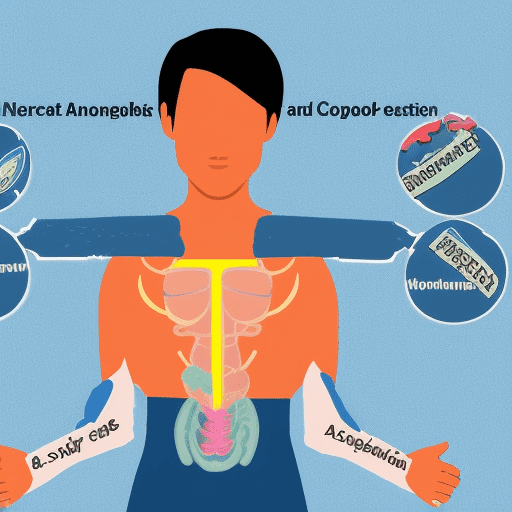When it comes to understanding the difference between aerobic and anaerobic respiration, there is a lot of information to take in.
In this blog post, we will break down the difference between these two types of respiration.

Aerobic respiration is a type of cellular respiration that uses oxygen to produce ATP, while anaerobic respiration does not use oxygen.
Though both types of respiration ultimately produce ATP, the two processes are quite different.
During aerobic respiration, glucose is broken down in the presence of oxygen to form water and carbon dioxide molecules, whereas, in anaerobic respiration, glucose is broken down in the absence of oxygen to form lactic acid or ethanol.
Aerobic respiration is a more efficient process than anaerobic respiration because it produces more ATP per molecule of glucose than anaerobic respiration.
This is due to the fact that aerobic respiration uses oxygen to complete the process of cellular respiration, while anaerobic respiration does not.
Aerobic respiration is a type of cellular respiration that uses oxygen to produce ATP, while anaerobic respiration does not use oxygen.
Though both types of respiration ultimately produce ATP, the two processes are quite different.
During aerobic respiration, glucose is broken down in the presence of oxygen to form water and carbon dioxide molecules, whereas, in anaerobic respiration, glucose is broken down in the absence of oxygen to form lactic acid or ethanol.
The difference between aerobic and anaerobic respiration
There are two types of respiration: aerobic and anaerobic.

Aerobic respiration requires oxygen in order to release energy, while anaerobic respiration does not.
Anaerobic respiration is less efficient than aerobic respiration, but it can still provide cells with the energy they need to function.
Aerobic respiration is the most common type of respiration.
It occurs when oxygen is present and involves the breakdown of glucose to produce carbon dioxide and water.
This process releases a lot of energy, which cells can use for various functions.
Aerobic respiration usually takes place in the mitochondria, which are specialized organelles in cells.
Anaerobic respiration occurs when oxygen is not present. In this case, glucose is broken down to produce lactic acid instead of carbon dioxide and water.
This process doesn’t release as much energy as aerobic respiration, but it can still provide cells with enough energy to function.
Anaerobic respiration usually takes place in the cytoplasm, which is the jelly-like substance that fills cells.
How do aerobic respiration and anaerobic respiration work?
In aerobic respiration, glucose is broken down in the presence of oxygen to form water and carbon dioxide.

This process occurs in the mitochondria, which are the cell’s powerhouses.
The breaking down of glucose produces a lot of ATP, which is why aerobic respiration is considered the most efficient way to generate energy.
Anaerobic respiration also breaks down glucose, but in the absence of oxygen.
Lactic acid is produced as a waste product, which can build up in muscles and cause fatigue.
Anaerobic respiration is less efficient than aerobic respiration and can only be used for short bursts of activity.
However, it is important because it allows us to generate energy when oxygen levels are low.
What are the benefits of aerobic respiration?
Without aerobic respiration, we would not be able to survive.

This is because aerobic respiration is how our cells produce the energy we need to live.
Aerobic respiration requires oxygen, and it results in the production of carbon dioxide and water.
The process of aerobic respiration can be divided into three stages: glycolysis, the Krebs cycle, and electron transport.
Glycolysis is the breakdown of glucose molecules into pyruvate molecules.
The Krebs cycle involves the oxidation of pyruvate molecules to produce carbon dioxide and water.
Electron transport is the final stage of aerobic respiration, during which electrons are passed down an electron transport chain to generate a proton gradient that produces ATP, the energy molecule that powers our cells.
As you can see, aerobic respiration is a complex process that is essential for life.
What are the benefits of anaerobic respiration?
Anaerobic respiration is used by some bacteria and fungi, as well as by some animals during intense exercise.
One benefit of anaerobic respiration is that it is very efficient; it can produce a lot of energy quickly.
Another benefit is that it does not produce as much waste as aerobic respiration; this is because the process does not use oxygen to break down food molecules.
As a result, anaerobic respiration is a useful process for many organisms.
How aerobic respiration is more efficient than anaerobic respiration
In order to understand how aerobic respiration is more efficient than anaerobic respiration, it is important to first understand the difference between the two processes.
Aerobic respiration requires oxygen in order to produce energy, while anaerobic respiration does not.
As a result, aerobic respiration is less likely to cause fatigue, since the body has a constant supply of oxygen to use for energy.
In addition, aerobic respiration produces more ATP than anaerobic respiration.
ATP is the primary source of energy for cells, and so a higher production rate means that the cells can work more efficiently.
Finally, aerobic respiration produces far less lactic acid than anaerobic respiration.
The lactic acid build-up is one of the main causes of muscle fatigue, so by producing less of it, aerobic respiration helps to keep the muscles working for longer.
In summary, aerobic respiration is more efficient than anaerobic respiration because it uses oxygen to produce energy, produces more ATP, and produces less lactic acid.
Article Sources
Jacks of Science sources the most authoritative, trustworthy, and highly recognized institutions for our article research. Learn more about our Editorial Teams process and diligence in verifying the accuracy of every article we publish.